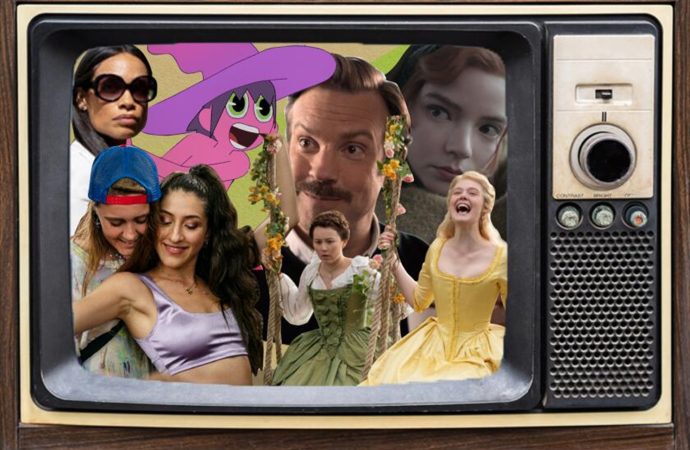Introduction Reality TV has undergone significant transformations since its inception, evolving from simple, unscripted formats to complex, multifaceted productions that captivate audiences globally. This article delves into the evolution of reality TV, exploring the new formats and trends that have emerged over the years. By examining these changes, we can better understand the dynamic nature
Introduction
Reality TV has undergone significant transformations since its inception, evolving from simple, unscripted formats to complex, multifaceted productions that captivate audiences globally. This article delves into the evolution of reality TV, exploring the new formats and trends that have emerged over the years. By examining these changes, we can better understand the dynamic nature of reality TV and its impact on popular culture.
The Birth of Reality TV

Image by: Yandex.com
- Early Beginnings
Reality TV traces its roots back to the 1940s and 1950s with shows like “Candid Camera,” which captured unsuspecting individuals in humorous situations. These early programs laid the groundwork for future reality TV formats by emphasizing real-life events and unscripted moments.
- The 1970s and 1980s
The 1970s and 1980s saw the emergence of more structured reality TV formats. Shows like “An American Family” (1973) documented the everyday lives of a typical American family, providing a raw and unfiltered look at their experiences. This period also witnessed the rise of talent-based competitions, such as “Star Search,” which paved the way for future talent shows.
The 1990s: The Reality TV Boom

Image by: Yandex.com
- The Real World
MTV’s “The Real World,” which premiered in 1992, is often credited with revolutionizing reality TV. The show brought together a diverse group of strangers to live in a house and have their interactions filmed. This format introduced the concept of “confessional” interviews, where cast members shared their thoughts and feelings directly with the audience.
- Survivor and Big Brother
The late 1990s saw the debut of “Survivor” (2000) and “Big Brother” (1999), two shows that would become cornerstones of reality TV. “Survivor” introduced the concept of contestants competing in physical and mental challenges while being voted off by their peers. “Big Brother,” on the other hand, placed contestants in a house under constant surveillance, with the public voting to evict housemates.
The 2000s: Diversification and Expansion

Image by: Yandex.com
- Talent Shows and Competitions
The 2000s witnessed an explosion of talent-based reality shows. “American Idol” (2002) and “The X Factor” (2004) became global phenomena, showcasing aspiring singers and performers. These shows not only provided entertainment but also launched the careers of many successful artists.
- Lifestyle and Makeover Shows
Lifestyle and makeover shows also gained popularity during this period. Programs like “Queer Eye for the Straight Guy” (2003) and “Extreme Makeover: Home Edition” (2003) offered viewers a blend of personal transformation and feel-good storytelling.
- Dating and Relationship Shows
Dating and relationship shows experienced a resurgence with hits like “The Bachelor” (2002) and “The Bachelorette” (2003). These programs combined romance, drama, and competition, creating a formula that continues to attract viewers.
The 2010s: Innovation and Digital Integration

Image by: Yandex.com
- Streaming Platforms and On-Demand Viewing
The rise of streaming platforms like Netflix, Hulu, and Amazon Prime Video in the 2010s revolutionized how audiences consumed reality TV. These platforms offered on-demand viewing, allowing viewers to binge-watch entire seasons at their convenience. This shift also led to the creation of original reality content tailored for streaming audiences.
- Social Media Integration
Social media became an integral part of reality TV during this decade. Shows like “Love Island” (2015) and “The Circle” (2020) encouraged viewers to engage with contestants and participate in real-time voting through social media platforms. This interaction blurred the lines between the show and its audience, creating a more immersive experience.
- Niche and Subculture Focus
The 2010s also saw the rise of niche reality TV shows that catered to specific subcultures and interests. Programs like “RuPaul’s Drag Race” (2009) and “Nailed It!” (2018) celebrated unique talents and hobbies, attracting dedicated fan bases.
The 2020s: Emerging Trends and Future Directions

Image by: Yandex.com
- Hybrid Formats
The 2020s have introduced hybrid reality TV formats that combine elements from different genres. Shows like “The Masked Singer” (2019) blend talent competitions with mystery and intrigue, while “Too Hot to Handle” (2020) merges dating with self-improvement challenges.
- Authenticity and Representation
There is a growing demand for authenticity and diverse representation in reality TV. Viewers are increasingly drawn to shows that reflect real-life experiences and feature a diverse cast. Programs like “Queer Eye” (2018) and “Indian Matchmaking” (2020) have been praised for their inclusive and authentic storytelling.
- Virtual and Augmented Reality
Advancements in technology are paving the way for virtual and augmented reality experiences in reality TV. These innovations have the potential to create immersive environments where viewers can interact with contestants and participate in challenges.
- Sustainability and Social Responsibility
As awareness of environmental and social issues grows, reality TV is beginning to incorporate themes of sustainability and social responsibility. Shows like “Down to Earth with Zac Efron” (2020) highlight eco-friendly practices and global challenges, encouraging viewers to consider their impact on the world.
Conclusion
The evolution of reality TV reflects broader changes in society, technology, and viewer preferences. From its humble beginnings to the diverse and innovative formats of today, reality TV continues to captivate audiences and shape popular culture. As new trends and technologies emerge, reality TV will undoubtedly continue to evolve, offering fresh and engaging content for years to come.
















